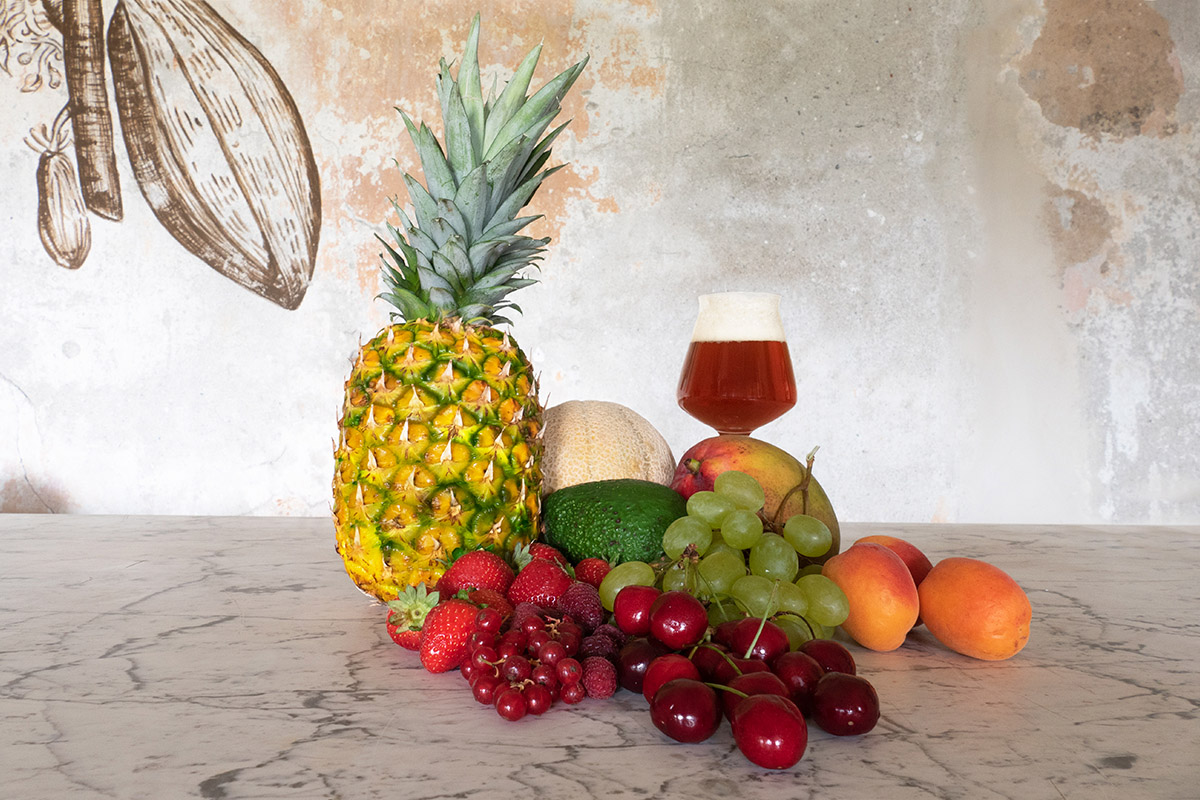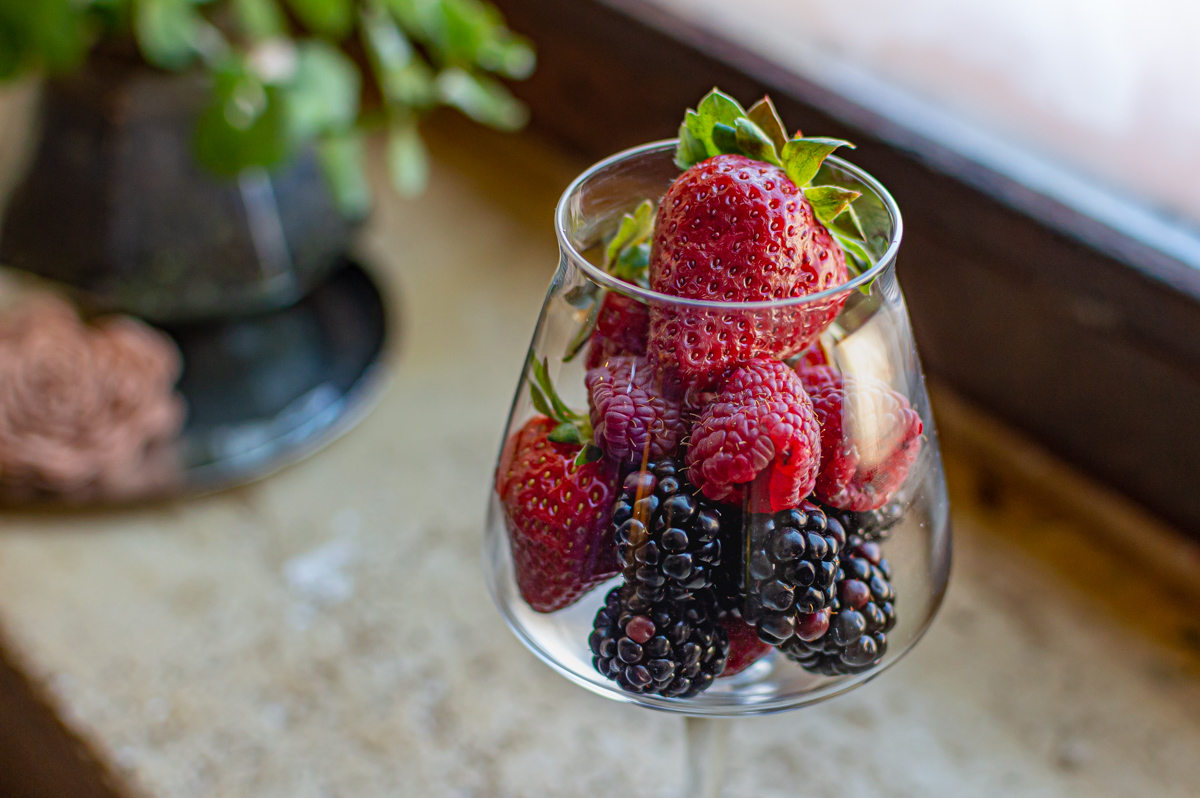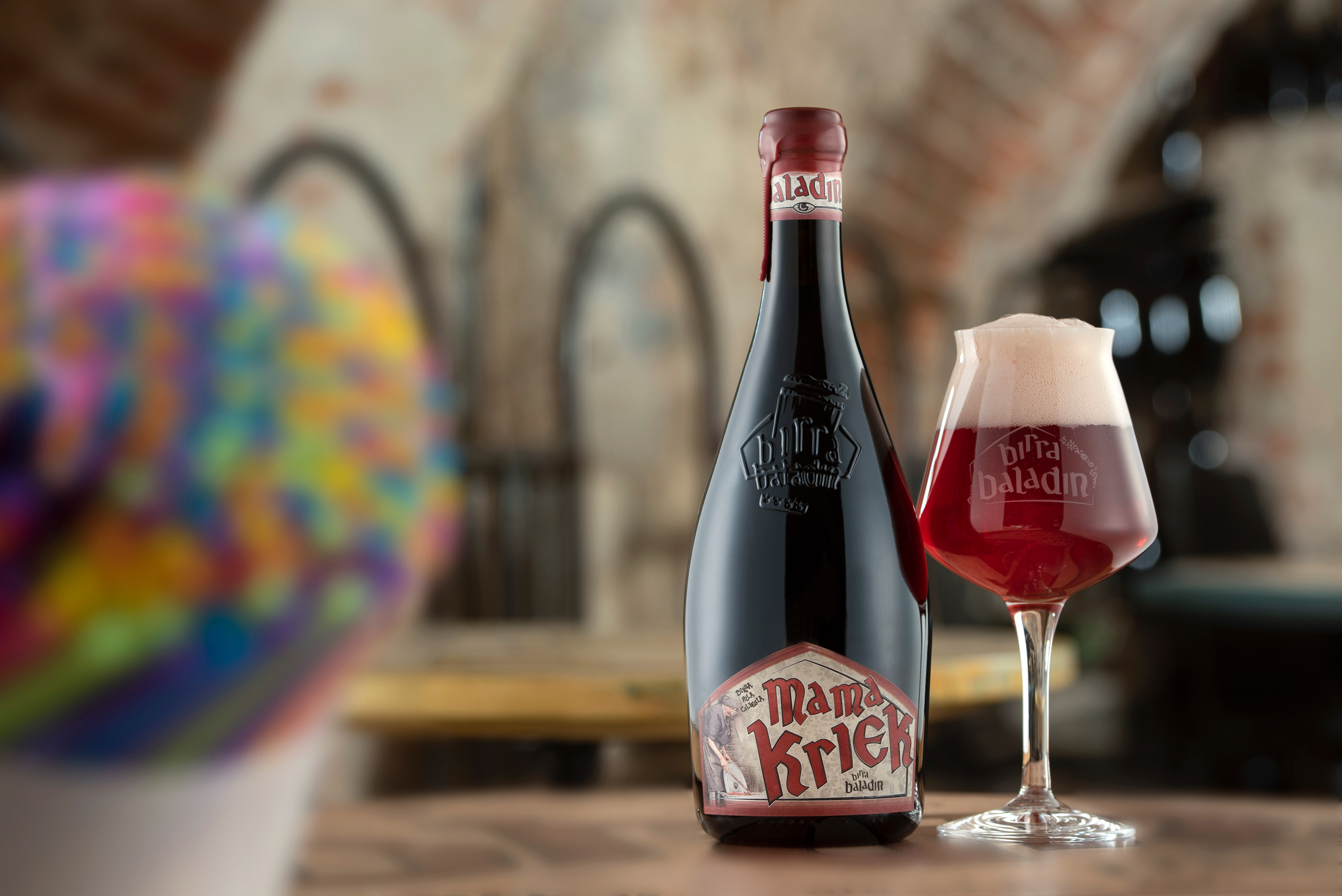History and characteristics of fruit beers

Today, it is not uncommon to come across craft beers made with fruit.
SUBSCRIBE TO BALADIN NEWSLETTER
The list of the different types of fruit that are used is virtually endless: cherries, raspberries, peaches, apricots, pumpkins, grapes and even exotic fruit such as mango, coconut and passion fruit. At first sight, this might be seen as the result of the eccentric choices of some brewers, or just a passing fashion. As a matter of fact, this is a deeply rooted custom in the international art of brewing. Of course, some of these beers have been created in relatively recent times, however the concept of Fruit Beer is far from being limited to the modern evolutions of craft beer.
The origins of Fruit Beers
When exactly did the first Fruit Beers appear in the history of brewing? There is no specific moment when this tradition made its way into the brewers' production rules. In other words, the very first archaeological findings dating back to thousands of years ago show that beer - in its most archaic form - was already produced with various different fruits, as well as spices and herbs. This habit has had ups and downs over the centuries, but there is no doubt that the use of fruit to make beer has never completely disappeared. The current international beer scene boasts different styles that can be referred to the general concept of Fruit Beer. Some of them belong to the history of the most important beer cultures in the world, others are the result of more recent trends.
The use of fruit in the brewing process meets certain needs and has specific repercussions on the final product. First of all, fruit gives a distinctive contribution to the aromas, enriching the beer bouquet with specific and characteristic traits. From this perspective, the role of fruit is so distinctive that many breweries - especially industrial ones - normally use extracts and syrups to artificially flavor (and often sweeten) their products.
The most famous case in the history of beer is the barbarization of Lambic which started in the 1980's. In an attempt to try to keep up with the profound changes in consumers' tastes, several producers of traditional Belgian spontaneously fermented beers began to add syrups and other sweeteners to their naturally sour beers, thus distorting the value of these very special products that have such a deep connection with the traditions of the past. A sort of aberrant evolution of the historical use of fruit - fresh fruit - in the production of Lambic, which is still used to make specific types of beer such as Kriek (with cherries) and Framboise (with raspberries).
The brewing of Fruit Beers
When we talk about authentic Fruit Beer, we talk about beers made with fresh fruit or fruit puree. The difference is important mainly because of the action of "unorthodox" microorganisms. The peel of untreated fruit is covered by many yeasts (in particular Brettanomyces) and bacteria that can interact with the fermentation, with results that are sometimes considered undesired. In particular, fruit is used in this way to obtain intentionally sour beers (the already mentioned Lambic, but also different Sour Beers) or beers that are later aged in wood. Fruit puree, instead, allows brewers to use fruit without incurring these effects and has other obvious advantages in terms of logistics.
When making Fruit Beer, all the typical characteristics of fruit must be taken into consideration: the aromas, of course, but also the different levels of acidity, tannins, bitterness and above all sugar content. Fruit is mostly composed of simple sugars, which tend to be converted completely by yeast. In fresh fruit these sugars cover the acidity (which, generally speaking, is always present, although with different levels of intensity). A brewer must therefore keep this aspect in mind when deciding to add fruit to their recipe.
The new frontiers of Fruit Beer
Although the use of fruit is a technical solution that has its roots in the mists of time, some types of Fruit Beer have only become popular in recent times. The use of exotic and tropical fruits is one of the latest evolutions of craft beer. Often, they are used to flavor slightly acidic beers, which in Brazil go by the name of Catharina Sour. Two other styles that have emerged in recent years are Grapefruit IPAs, made with the addition of grapefruit or other citrus fruits to enhance similar notes given by American hops, and Italian Grape Ales, the only beer style acknowledged as Italian. Here, the peculiarity is the use of grape, almost always in the form of must. As you may have guessed, they represent the link between beer and wine, the ultimate fermented drink made from fruit.
Fruit beers have always existed in the history of beer and represent a particular family of products characterized by their special ingredient, both in terms of aromas and brewing process.





